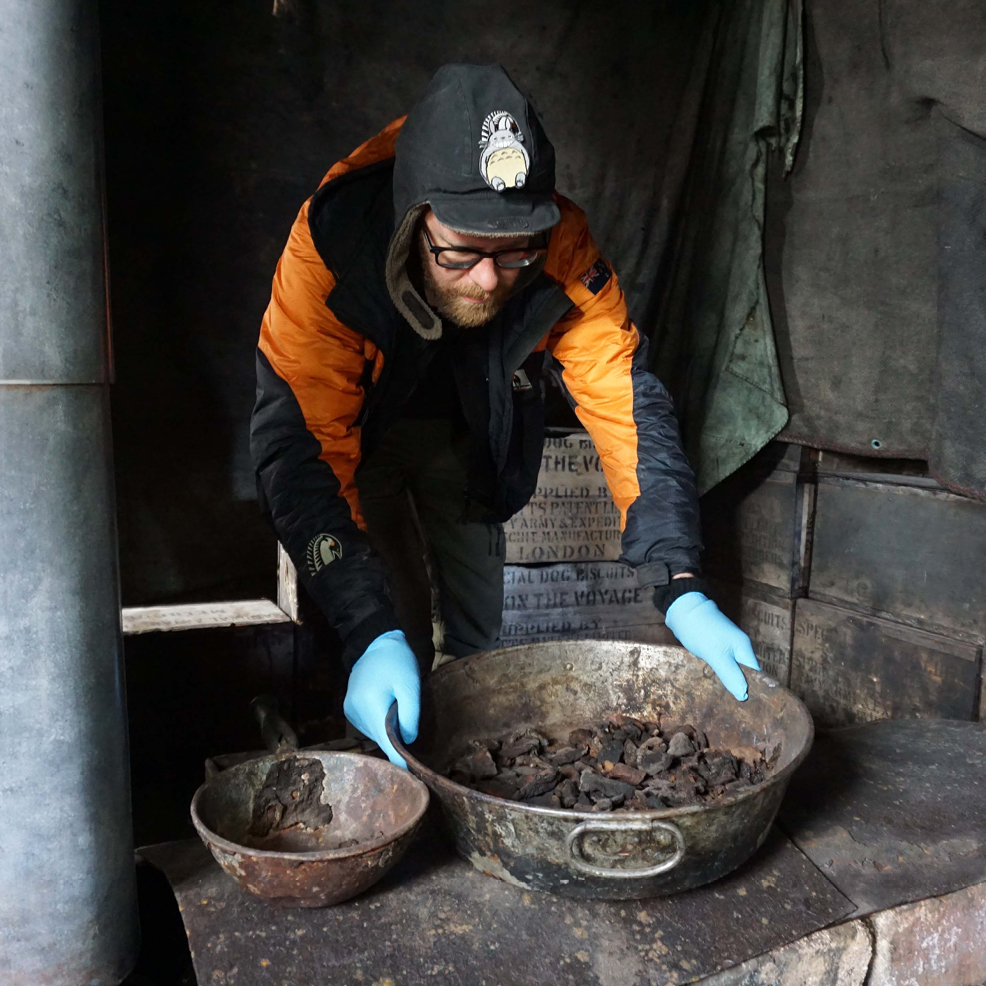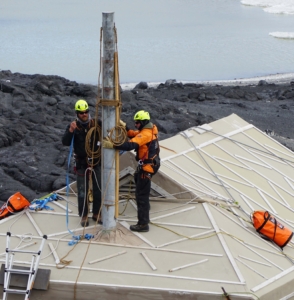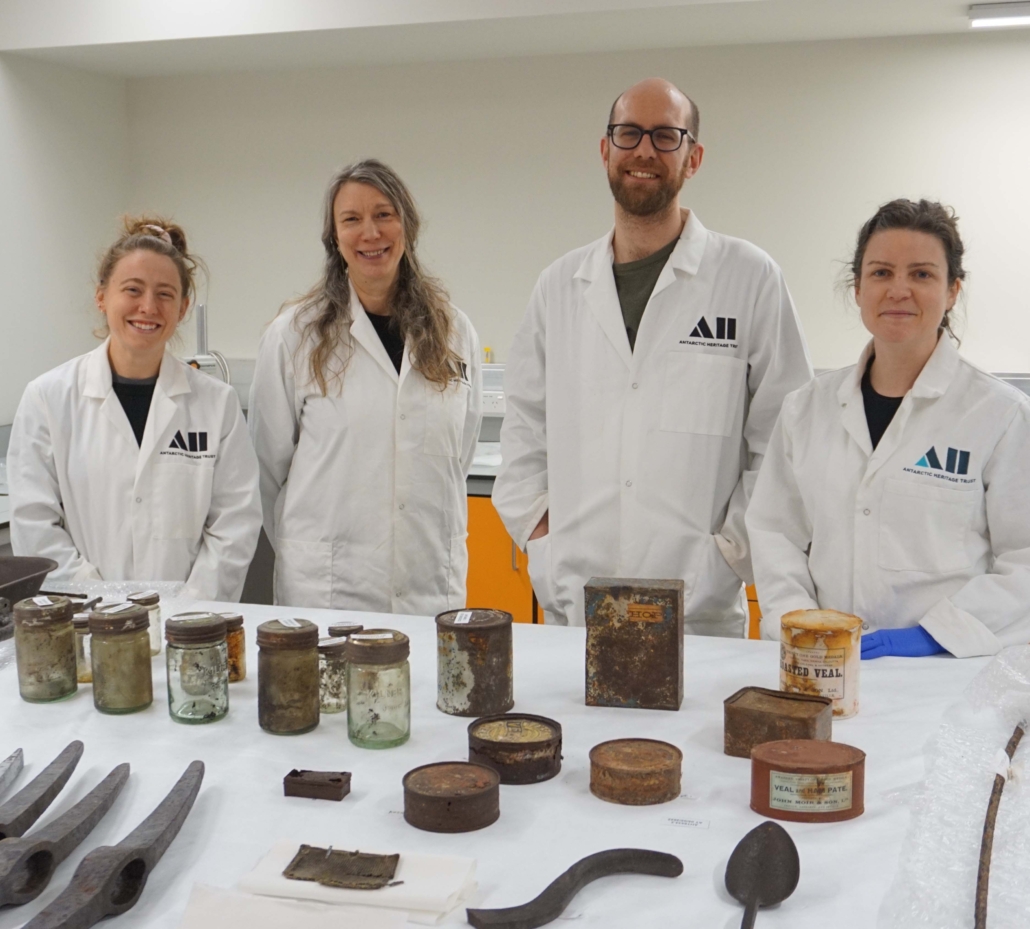The Antarctic Heritage Trust’s Ross Sea Heritage Restoration Project (RSHRP) embodies our commitment to conserve, share, and encourage the spirit of exploration. This world-leading initiative stands as the largest and most comprehensive conservation effort ever undertaken in the polar regions.
Our Mission
The RSHRP aims to conserve the physical legacy of early Antarctic explorers while keeping their intrepid spirit alive for future generations. This ambitious project safeguards key explorer bases established by Scott, Shackleton, Borchgrevink, and Hillary, along with the myriad artefacts connected to these historic sites.
Global Significance
In 2002, HRH Princess Anne launched the Trust’s RSHRP in Antarctica. At around the same time, the international community began to recognise the importance of these sites. The Getty Foundation made significant funding available for the project and the World Monuments Fund listed all four heroic-era sites on their 2008 list of the 100 Most Endangered Sites on Earth.
Over the past 20 years, thanks to the generous support of donors from around the world, we’ve raised and invested NZ$25 million in this project. We’ve brought together more than 95 conservation specialists from 16 countries to work in one of Earth’s most challenging and remote environments. Their dedicated efforts have led to the conservation of five historic sites and over 20,000 artefacts. Each preserved item tells a unique story of early Antarctic exploration and scientific discovery.
The global significance of these sites cannot be overstated. They represent the only continent on Earth where humans’ first dwellings still stand, marking the birthplace of Antarctic science and exploration. These sites have received the highest protection available under the Antarctic Treaty System.
Conservator Conor Tulloch with the remains of the last meal cooked in Scott’s Discovery hut. © AHT/Conor Tulloch
Key Achievements
The Trust has completed major conservation work on three heroic-era Ross Island expedition bases and their contents:
- Sir Ernest Shackleton’s 1907-09 base and its collection of more than 6000 artefacts
- Captain Robert Falcon Scott’s last expedition base at Cape Evans and its 11,500 artefacts
- Scott’s first expedition base at Hut Point and its 500 artefacts
The Trust has completed major conservation work at the site marking the birthplace of New Zealand’s enduring presence on the continent, conserving Hillary’s TAE/IGY Hut at Scott Base and its 600 artefacts.
The Trust has conserved more than 1,500 artefacts from Borchgrevink’s hut at Cape Adare, the site of the first dwellings in Antarctica, and is currently working to conserve the buildings on site.
The historic-base sites now have a programme of conservation monitoring and treatment work in place, undertaken annually, for years to come.
L-R: Zack Bennett and Lachie Cromar reinstate the chimney flue on top of Shackleton’s Nimrod hut. © AHT/Jane Hamill
Sharing Antarctic Heritage
Our commitment to sharing this heritage is evident in our conservator’s painstaking efforts to retain the absolute maximum historic material they can when working with the buildings and artefacts. Visitors describe stepping into these conserved spaces as traveling back in time. David Attenborough famously called them a “time warp without parallel.” This authenticity allows modern-day visitors to connect deeply with the experiences of early explorers.
Encouraging Exploration
The RSHRP encourages the spirit of exploration by safeguarding the legacy of human endurance, scientific curiosity, and international cooperation that these early Antarctic expeditions represent. Remarkable discoveries made during our work, such as crates of century-old whisky and unseen photographs, continue to excite public interest and inspire new generations of explorers and scientists.
Ongoing Efforts
Our work continues with the continual vigilance and ongoing conservation required to maintain these fragile sites in the harsh conditions of the Antarctic climate, and our current major project to carry out the conservation of Borchgrevink’s hut at Cape Adare. These efforts ensure that the spirit of exploration remains alive and accessible. By preserving these physical links to the past, we not only protect our global heritage but also inspire future explorers to push the boundaries of human knowledge and achievement.
The Trust’s 2022 winter conservation team in their lab at Scott Base, Ross Island. L-R: Shannah Rhynard-Geil, Belinda Hager, Conor Tulloch and Jane Hamill.




